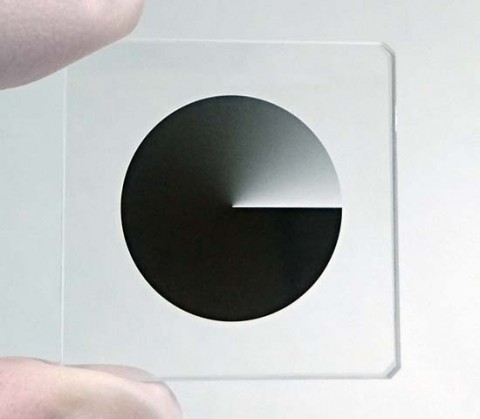A gradation pattern is a pattern with smooth changes in transmittance or reflectance. EQUA’s proprietary data processing method allows you to design not only linear changes but also various curves such as sine waves and parabolas. There are two types of transmission type: film and glass. For the glass type, we use a high-precision drawing device to achieve smooth grayscale expression with microscopic dots with a minimum size of 2um.For the film type, a unique precision exposure process enables the creation of an extremely smooth gradation pattern with flexible density changes. Due to its ability to express neutral colors, photographic paper is sometimes used to produce reflective type products.
Examples of production using Glass Substrate
Example of production using PET Substrate
Gradation Patterns
A gradation pattern can be used to smoothly vary the light transmittance and is commonly applied in dimming patterns. The transmittance can change not only linearly, but also according to various curves, such as sine waves and parabolas. The substrate can be made of glass, PET, and other materials, as well as paper.












